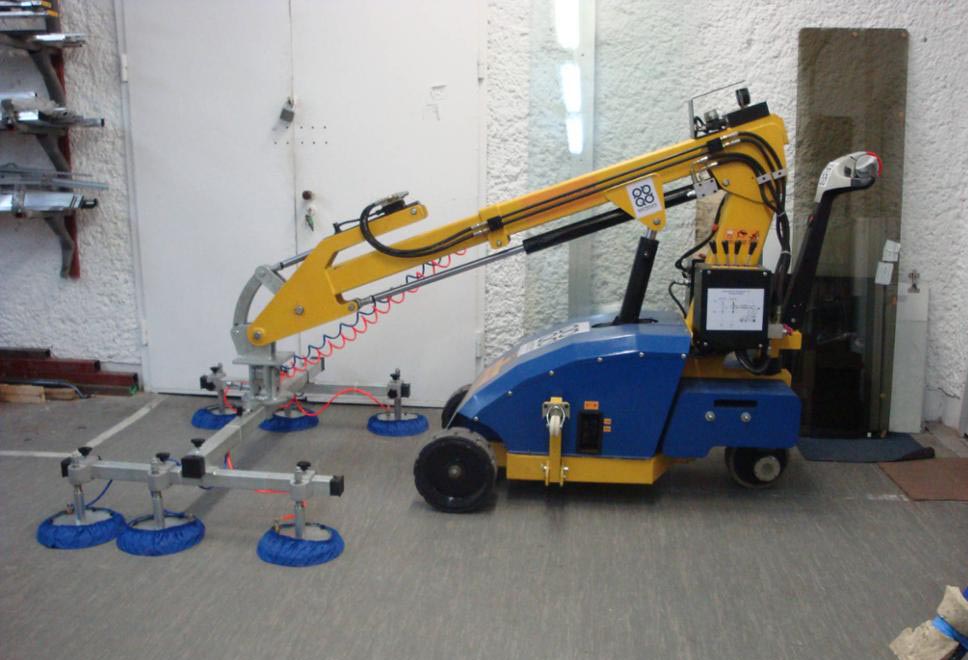
Test Method of Vacuum in the Use of Vacuum glass lifter
Keyword:Vacuum glass lifter Time:2019-11-5 8:54:55
Vacuum glass lifter is widely used in production and life, but how to control the air pressure of vacuum glass lifter in the process of operation? Next we will introduce the method of centralized vacuum measurement.
Vacuum measurement methods mainly include:
1. Direct Measurement of Gas Pressure-U-shaped Vacuum Gauge and Maxwell Vacuum Gauge
2. Indirect measurement, non-electric measurement methods: thermocouple vacuum gauge, ionization vacuum gauge (hot cathode, cold cathode), etc. This paper introduces the indirect measurement method of vacuum in detail.
The principle of ionization vacuum gauge and thermocouple vacuum gauge in indirect measurement is introduced below. The working principle of ionization vacuum gauge:
In low pressure gases, the number of positive ions produced by ionization of gas molecules is proportional to the density of gas molecules. Using this relationship, an ionization vacuum gauge can be made. The ionization vacuum gauge can measure the pressure of the space by measuring the number of ions.
The working principle of thermocouple vacuum gauge: A heat conduction vacuum gauge is made by utilizing the relationship between the thermal conductivity of gas and the vacuum degree. The higher the pressure is (the lower the vacuum is), the more the number of molecules is, the more heat is taken away from the filament, and the smaller the electromotive force produced by the thermocouple. The lower the pressure (the higher the vacuum), the less the number of molecules, the less heat on the filament, and the greater the electromotive force produced by the thermocouple.
Measuring range: 5-0.1pa. When the pressure is strong, the heat conduction of gas molecule is independent of P. When the pressure is low, the solid heat conduction through radiation and filament is dominant, which is independent of P.
Application: 1. In high vacuum measurement, ionization vacuum gauge is the most important and practical one. 2. In extremely high vacuum measurement, ionization vacuum gauge is the only practical vacuum gauge.
Vacuum glass lifters are widely used, even in very special environments. However, special maintenance should be done for vacuum glass lifters in special environments, and some matters should be paid attention to when using them.
1. Use in low temperature environment. When vacuum glass lifter is used in the environment below 5 C, air drying should be installed to prevent condensation and freezing of compressed air.
2. Shock and Vibration. The impact on vacuum components should be 150 m/s. Below, the vibration should be 40m/s. Following. If this value is exceeded, it will cause erroneous action.
3. When wiring pressure sensors and other conductors, they should be far away from high-voltage power supply machines, high-voltage wires and power lines with greater interference. Otherwise, it will cause misoperation or malfunction.
1. Do not use in the presence of corrosive gases, chemicals, sea water, water vapor or in the presence of the above substances.
2. When there is direct sunlight, please use protective shield to block the sunlight.
3. When there is a heat source around, please cut off the radiation heat.
4. When installing solenoid valve on the control panel, take heat dissipation measures to meet the temperature range required by specifications.
5. Where spark splashes occur during welding, Please add protective shield. Sparks can burn out the plastic parts of solenoid valves and easily cause fire.
6. When water droplets drop directly on the solenoid valve, it will cause leakage and coil burnout. Please pay attention to protection, install protective cover for solenoid valve or set it in panel.


- No information
-
1. Design objective of electronic crane scale network management. (1) Adopt advanced distributed data processing techno…
-
Electronic crane scale bearing platform installation to focus Electronic crane scale can be installed generally on the li…


